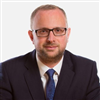This practical and interactive course will demystify the complex area of combined EU/US patent applications. The expert trainers will address the parallel - but substantially different - rules for drafting and prosecuting patents required by the Examiners and Boards of Appeal of the EPO and USPTO. They will highlight the risks and pitfalls to be aware of and explain how to avoid them or deal with them if challenged by the patent offices.
The comprehensive programme will ensure that you get to grips with the contrasting approaches of the EPO and USPTO and understand the experts’ techniques for drafting an application for, and responding to, rejections issued by the two offices.
During the practical exercises you will learn how to correct and modify a sample application to be filed with both the EPO and USPTO and practise developing effective arguments for the EPO and USPTO, taking into account hypothetical patent office rejections.
You will also have the opportunity to discuss your particular questions and concerns with the expert trainers, as well as share experiences with like-minded professionals.
Key topics to be covered include:
- The often unseen traps posed by differing EU and US requirements
- ‘Best practices’ for reconciling the EU and US requirements and drafting an application to:
- Maximise scope of protection
- Reduce objections
- Minimise costs and maximise flexibility
- Prosecution procedures
- EPO and USPTO approaches to rejections
- Responding to EPO and USPTO rejections, based on an optimised specification
- Limiting US prosecution history estoppel
- Practical session using worked examples to help embed the learning
Benefits of attending
By attending this course you will:
- Consider the similarities and differences between the EPO and USPTO
- Learn about the best practices for preparing to comply with European and US requirements
- Expand your knowledge on prosecution and appeal procedures
- Get to grips with EPO and US definitions of prior art and priority
- Understand inventive step (EPO) vs obviousness (US)
- Explore the arguments on non-technical (EPO) and subject matter (US)
Certifications:
- CPD: 12 hours for your records
- Certificate of completion
Speakers

Mr David Meldrum,
Patent Attorney ,
D Young & CoDavid has been in private practice since 1998 and joined D Young & Co in 2001 and became a partner in 2006.
David practises in a variety of engineering disciplines including computer hardware and software, electronics, optics, nanotechnology, medical devices, automotive engineering and registered designs. He is experienced in all aspects of patent procurement including drafting specifications, international filing programmes and patent prosecution, and in portfolio management and competitor monitoring.
He is a member of the Institution of Engineering and Technology (IET) and a member of the Institute of Electrical and Electronics Engineers (IEEE). David’s clients include multi-national corporations and SMEs based in the UK, Europe and worldwide and he regularly presents IP lectures for clients and associates. He is a contributor to the D Young & Co Patent Newsletter.
Mr Bradley Hulbert,
Founding Partner,McDonnell Boehnen Hulbert & Berghoff LLP ,
Management ForumBradley J. Hulbert is a founding partner in McDonnell Boehnen Hulbert & Berghoff LLP, an 80-lawyer patent firm in Chicago. Mr. Hulbert has overseen the development of a diverse range of extensive, international patent portfolios and has worked as an adjunct professor of law at the Chicago-Kent Law School for more than 20 years.
Who Should Attend
This course has been specially designed for:
- Patent professionals and other executives who are responsible for patent applications that are filed in and prosecuted before both the European and US Patent Offices
- Managers overseeing and evaluating multinational patent prosecution










